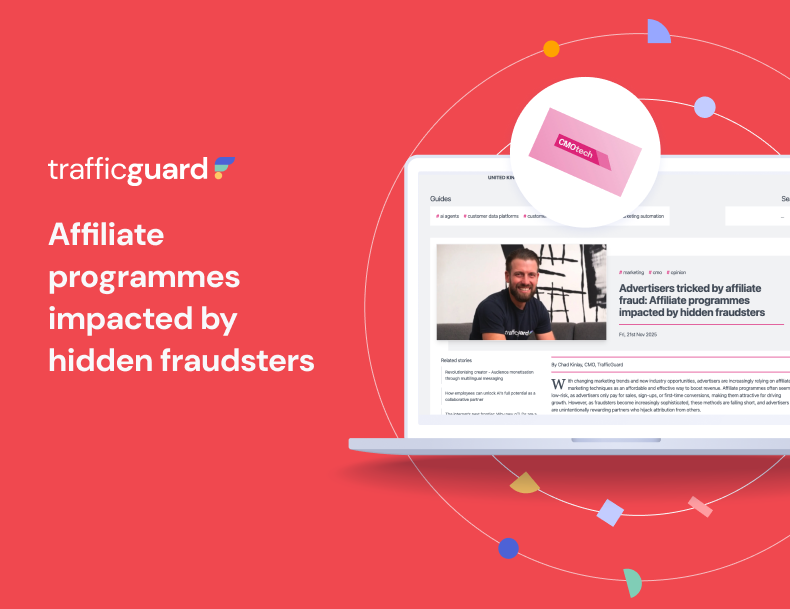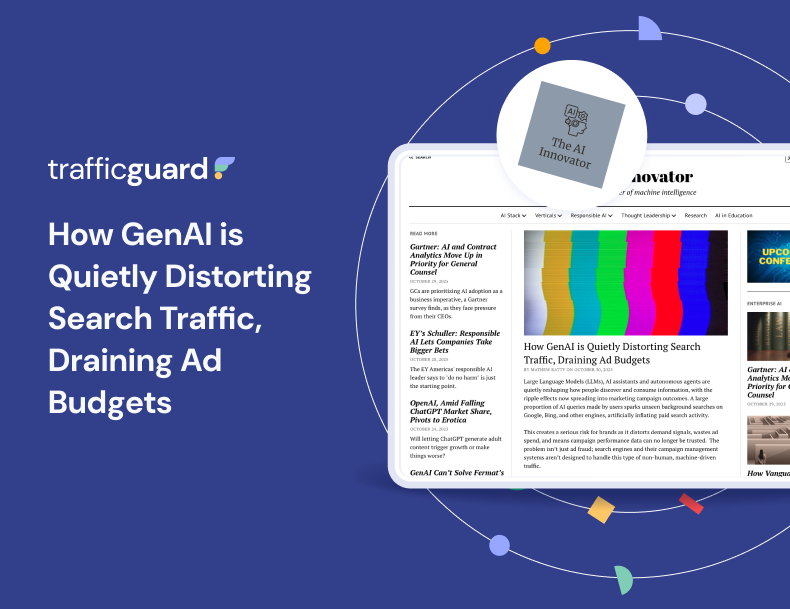Experts warn of 20-30% surge in ad fraud imperiling advertisers during festive and sporting events

With growing digital penetration and internet market in India, the new age digital mediums such as Connected TV, Over The Top Platforms, DOOH, etc. followed by digital websites and social media platforms have become the new shiny toys, upon which advertisers have been spending quite heftily.
That being said, today it is almost impossible to find any brand which doesn’t leverage digital mediums for advertising. In fact, during the festive season and impact sports properties, brands allocate comparatively higher quarterly budgets, making it a sweet spot for digital ad fraudsters who follow the ad monies.
Chadwick Kinlay, Chief Marketing Officer, TrafficGuard, also attributed that the rapid growth of digital advertising in India, with a multitude of platforms and channels, has made it difficult to monitor and regulate ad placements effectively.
This complexity coupled with the adoption of new technologies, lack of regulations as well as cultural and language diversity is what makes it easier for fraudsters to exploit loopholes in India, he mentioned.
“On average, up to 20% of a brand's ad budget can be wasted due to ad frauds,” he said.
In his perspective, this ad fraud encompasses activities like ad stack spoofing during live sports events, resulting in advertisers paying for impressions that were not viewable or were misrepresented. It also involves manipulated ad viewability metrics during high-profile sports events, misleading advertisers into thinking their ads received more views than they actually did, which in turn distorts ROI calculations.
Along with these, he has also witnessed click frauds wherein bots generate fake clicks and drain the advertisers' budgets without delivering genuine engagement and the brands’ reputation, consumer trust and long-term ROI being adversely impacted due to its appearance in inappropriate or fraudulent contexts.
When asked about the emergence of ad fraud during festive seasons and major sports events taking place this year, IAS' Khattar stated that since more than usual viewers tune in during sporting tournaments, the trend of ad frauds showing an upward movement during such events is likely to continue in India.
“Leading up to the FIFA Women’s World Cup 2023, we observed a 126% increase in general invalid traffic and a 59% increase in global invalid traffic. This pattern mirrors spikes we have previously observed in ad fraud rates surrounding major sporting events like the 2022 Winter Olympics and the FIFA Men’s World Cup 2022,” he said.
Taking lead from this, Traffic Guard’s Kinlay also shared the viewpoint that ad fraud tends to increase during sports events and the festive season, with fraudsters taking advantage of heightened ad activity.
He also mentioned that they anticipate ad fraud to increase by 20-30% during sports events and the festive season in India this time around, primarily in video and display formats across digital and mobile platforms.
Striking a similar tone, mFilterIt’s Gupta also stated that the rising amount of invalid traffic or ad fraud, in his view, is fundamentally a function of demand and supply, meaning if there is a lot of demand and limited supply, then it is met up with a lot of ad fraud as well and vice versa.
Therefore, in the case of sporting events or festive periods, when advertisers suddenly want to spend a lot of money on advertising to garner the most eyeballs owing to the massive reach of such tournaments, he foresees a spurt of as much as 30-35% of digital ad budgets being wasted upon the amount of invalid traffic coming from hotspots not just in India but out of markets such as Russia, Vietnam, Eastern Europe, etc.
The various ad frauds that have become a rising concern for advertisers these days include Made for Advertising sites whose sole purpose is to first come up with articles containing useless content and then placing hundreds of ads on the same web pages, contributing to 23% invalid traffic on programmatic, something that Indian advertisers have not been cautious about.
Apart from this, he also mentioned that invalid traffic can be found in other formats as well, such as ad stacking wherein multiple ads are stacked one on top of each other and the viewer can only see the top ad, or even putting multiple 1x1 sized ads which are not visible to the human eye.
“In general, on OTTs and CTVs we are seeing a lot of issues on frequency cap violations since brand campaigns therein typically run on reach and frequency. In these channels, what we are seeing is that frequency is getting violated, quite heftily, resulting in a lot of viewers seeing the same ad n number of times, even though it was scheduled to run only twice or thrice, which eventually impacts the brand’s reach as the ad is not being shown to newer audiences, but to the same viewers, multiple times,” he stated.
Furthermore, Gupta also pointed out that while there is no foolproof way to kick the nemesis of ad fraud to the curb, what can prove to be a viable solution for advertisers is having independent third-party tracking in place which should actually be looking at data with all the inputs rather than looking at only a narrow view.
“A lot of traditional fraud detection vendors, for example, don't do frequency validations. Now in a brand campaign when reach and frequency are the main metrics for you to evaluate, if the reach and frequency are not being independently measured, then there is no point in that system. So it's important for advertisers to question whether their existing validation system is identifying the reach and frequency metrics,” Gupta opined.
Moreover, he also pointed out that if the existing system is identifying anything less than 5% invalid traffic for any advertiser, then that system is actually not doing its job and one should actually question the same, rather than assuming that the dashboard is showing the gospel truth, because the amount of invalid traffic is definitely nothing short of 15-20%.
On the other hand, IAS Khattar stated that ad fraud will never be zero and that there will always be some amount of ad fraud in the campaigns. However, with the help of ad verification tools, advertisers can mitigate ad fraud to very low levels, For example, in India, IAS saw campaigns with ad fraud mitigation strategies report ad fraud rates of 0.02% as opposed to 13-16% ad fraud rates in campaigns without ad fraud mitigation.
“Since ad fraud is not restricted to mobile, desktop, or CTV platform advertisers, the onus to prevent ad fraud lies with the entire ad tech industry. Marketers need to work with digital media quality vendors that provide a full complement of pre-bid optimisation solutions and post-bid measurement solutions to drive lasting results. Also, on the back of advancements in artificial intelligence (AI) and machine learning (ML) technology, we now have cutting-edge solutions that advertisers can use to identify ad fraud and protect their digital campaigns,” he said.
TrafficGuard’s Kinlay also emphasised that in order to proactively combat ad fraud, the industry is focusing on partnerships with trusted vendors and must strike a balance between maximising ad spend and ensuring brand safety by using real-time monitoring and fraud prevention tools along with continuously updating their fraud prevention strategies and adopting AI-powered detection.
Read more 👉 Experts warn of 20-30% surge in ad fraud imperiling advertisers during festive and sporting events
Get started - it's free
You can set up a TrafficGuard account in minutes, so we’ll be protecting your campaigns before you can say ‘sky-high ROI’.
At TrafficGuard, we’re committed to providing full visibility, real-time protection, and control over every click before it costs you. Our team of experts leads the way in ad fraud prevention, offering in-depth insights and innovative solutions to ensure your advertising spend delivers genuine value. We’re dedicated to helping you optimise ad performance, safeguard your ROI, and navigate the complexities of the digital advertising landscape.
Subscribe
Subscribe now to get all the latest news and insights on digital advertising, machine learning and ad fraud.







